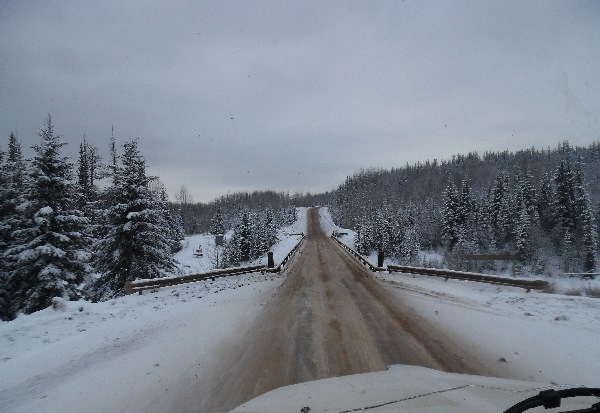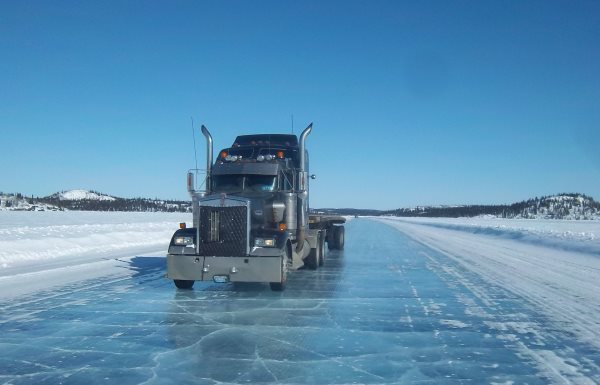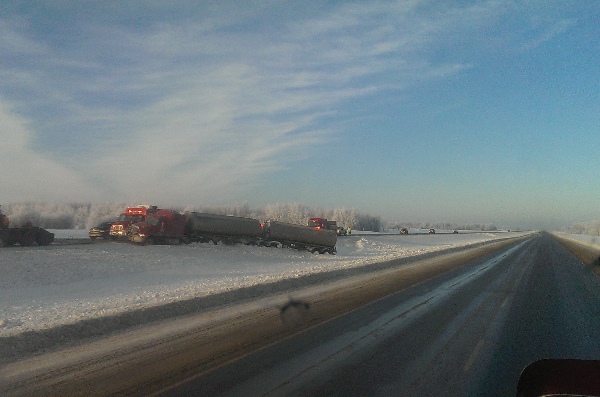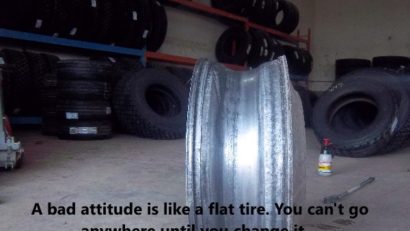Oilfield VHF radio use was something I was introduced to on my first day in the oilfields. There was no orientation, training, or quick rundown on what to do, or to expect.
It was a typical icy, narrow, oilfield road and I wish I’d read an article like this to have some idea of what to expect. Thankfully, I was following another driver and I listened carefully knowing I could possibly be on my own on the way out. I was glad I listened, because that’s exactly what happened.
Welcome to Section 7 of our 8 Part Oilfield Trucking Series. If you’ve landed on this page from a web search, make sure you check out the rest of the series.
We already covered some dangers of off road driving like road conditions, narrow roads, small one lane bridges and steep grades. Proper oilfield VHF radio use is what makes this job safer when dealing with these conditions. Of all the truck driver accessories you’ll need in the oilfields, this is one of the most important ones. There are still other things you’ll need to be prepared and we’ll cover those in the next section.
Why a VHF Radio?
If you’re from the east, you’ll find truckers CB usage in western Canada is almost non existent even on the highways. The other things is the oilfield truckers lingo may be a little different than what you’re used to, but you’ll get used to it just like the VHF radio.
VHF (Very High Frequency) radios are used over a CB radio because they have better range, less interference, clear sound quality and a larger channel capacity than a standard CB radio.
A VHF radio should be tested as part of your pre-trip inspection (just like a blower or wet kit). You’re not going to drive 300 km of highway, and another 3 hours of bush roads to find out something essential doesn’t work when you get there, so don’t leave without performing a radio check.
Some roads will have security check points, and won’t let you proceed without a good working radio when you sign in. They may let you proceed with another vehicle to escort you, but don’t count on it. More and more companies are getting stickier with the rules.
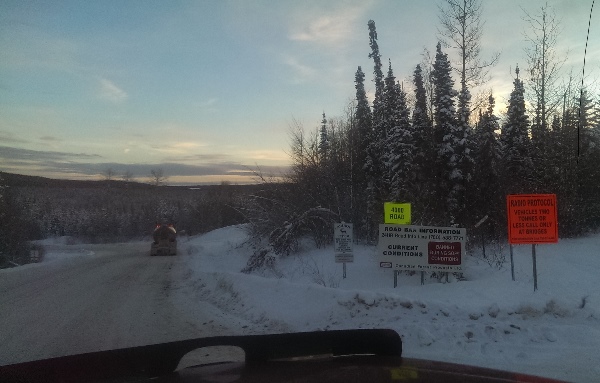
Oilfield VHF radio use. Most roads will have signs posted at the entrance displaying the radio channel, a contact number for road ban information, and the name of the road.
VHF Road Channels
Most oilfield roads will have a designated channel that is posted at the entrance, or noted on your driving directions. I have on occasion driven on roads with no designated channel, or have optional use of radios. This never made sense in an industry that pushes so hard for safety, but it happens.
Sometimes you’ll have to make an extra effort to find out a channel either by stopping someone on their way out, or using the scan feature on your radio to try and pick up other users. (Be resourceful when it comes to your safety.)
There’s also times you’ll enter a road at another point other than a main entrance with no sign to identify the road or the channel. Some of the main bush roads could be over 100 km long, with multiple roads you can enter or leave from. They won’t post signs at all these entrances.
For this reason, oilfield driving also requires good route planning just like highway or city work. I got into the habit of getting as much information from dispatch, or other drivers whenever I could. Chances are someone has been down that road before and could warn you of any hazards associated with that road. They can also point out things like switchbacks, steep hills and good locations to chain up.
Keep in mind that things can change quickly working off road. You could find a designated road channel was changed to something else since the last time you visited the road. This could be the result of increased traffic volume for the channel, another nearby road using the same channel, changes in road use agreements, or ownership of the road.
You’ll find the rules can be different depending on the Province, road or region, but most roads have a “Road use agreement” contract that you’re responsible for knowing. This is a guide to let you know all the rules and regulations in place for that road. this brings us to another topic.
Road bans
Road owners can place bans at any time. Weight restrictions and bans happen every spring when the frost comes out of the ground, but bans can also be for other reasons. Bans are placed on roads during wet conditions depending on how well the road is built. Some are high grade quality with a good gravel base, while others are dirt and become very muddy.
Some of the busier roads have bans to truck traffic during peak times for workers in smaller vehicles under 1 or 5 tons. These bans are usually posted at the main entrance to an oilfield. To save yourself grief, try to ask this question to your dispatcher before you leave on your trip.
